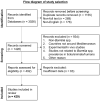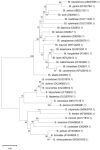Prevalence of Lyme Disease and Relapsing Fever Borrelia spp. in Vectors, Animals, and Humans within a One Health Approach in Mediterranean Countries
- PMID: 38921809
- PMCID: PMC11206712
- DOI: 10.3390/pathogens13060512
Prevalence of Lyme Disease and Relapsing Fever Borrelia spp. in Vectors, Animals, and Humans within a One Health Approach in Mediterranean Countries
Abstract
The genus Borrelia has been divided into Borreliella spp., which can cause Lyme Disease (LD), and Borrelia spp., which can cause Relapsing Fever (RF). The distribution of genus Borrelia has broadened due to factors such as climate change, alterations in land use, and enhanced human and animal mobility. Consequently, there is an increasing necessity for a One Health strategy to identify the key components in the Borrelia transmission cycle by monitoring the human-animal-environment interactions. The aim of this study is to summarize all accessible data to increase our understanding and provide a comprehensive overview of Borrelia distribution in the Mediterranean region. Databases including PubMed, Google Scholar, and Google were searched to determine the presence of Borreliella and Borrelia spp. in vectors, animals, and humans in countries around the Mediterranean Sea. A total of 3026 were identified and screened and after exclusion of papers that did not fulfill the including criteria, 429 were used. After examination of the available literature, it was revealed that various species associated with LD and RF are prevalent in vectors, animals, and humans in Mediterranean countries and should be monitored in order to effectively manage and prevent potential infections.
Keywords: Borrelia; Borreliella; Lyme Disease; One Health; bacteria; human-animal-environment interaction; louse-borne; relapsing fever; tick-borne; zoonoses.
Conflict of interest statement
The authors declare no conflicts of interest.
Figures











Similar articles
-
A new Borrelia species isolated from patients with relapsing fever in Spain.Lancet. 1996 Jul 20;348(9021):162-5. doi: 10.1016/s0140-6736(96)02332-x. Lancet. 1996. PMID: 8684157
-
A phylogenomic and molecular marker based proposal for the division of the genus Borrelia into two genera: the emended genus Borrelia containing only the members of the relapsing fever Borrelia, and the genus Borreliella gen. nov. containing the members of the Lyme disease Borrelia (Borrelia burgdorferi sensu lato complex).Antonie Van Leeuwenhoek. 2014 Jun;105(6):1049-72. doi: 10.1007/s10482-014-0164-x. Epub 2014 Apr 18. Antonie Van Leeuwenhoek. 2014. PMID: 24744012
-
Lyme disease and relapsing fever in Mexico: An overview of human and wildlife infections.PLoS One. 2020 Sep 17;15(9):e0238496. doi: 10.1371/journal.pone.0238496. eCollection 2020. PLoS One. 2020. PMID: 32941463 Free PMC article. Review.
-
Perpetuation of Borreliae.Curr Issues Mol Biol. 2021;42:267-306. doi: 10.21775/cimb.042.267. Epub 2020 Dec 10. Curr Issues Mol Biol. 2021. PMID: 33300495 Free PMC article.
-
Recombinant protein immunoblots for differential diagnosis of tick-borne relapsing fever and Lyme disease.J Vector Borne Dis. 2023 Oct-Dec;60(4):353-364. doi: 10.4103/0972-9062.383641. J Vector Borne Dis. 2023. PMID: 38174512 Review.
Cited by
-
Unmasking Borrelia species: A comprehensive review of their presence in Iran.Int J Parasitol Parasites Wildl. 2025 Jul 29;28:101123. doi: 10.1016/j.ijppaw.2025.101123. eCollection 2025 Dec. Int J Parasitol Parasites Wildl. 2025. PMID: 40808974 Free PMC article. Review.
-
Molecular Epidemiology of Ticks and Tick-Borne Pathogens in the Ta-Pa Mountain Area of Chongqing, China.Pathogens. 2024 Oct 31;13(11):948. doi: 10.3390/pathogens13110948. Pathogens. 2024. PMID: 39599501 Free PMC article.
-
High Schistosoma mansoni infection intensity is associated with distinct gut microbiota and low levels of systemic cytokines in children along the Albert-Nile, Northern Uganda.BMC Microbiol. 2025 Aug 14;25(1):506. doi: 10.1186/s12866-025-04252-5. BMC Microbiol. 2025. PMID: 40814028 Free PMC article.
References
Publication types
MeSH terms
LinkOut - more resources
Full Text Sources
Medical
Research Materials
Miscellaneous

